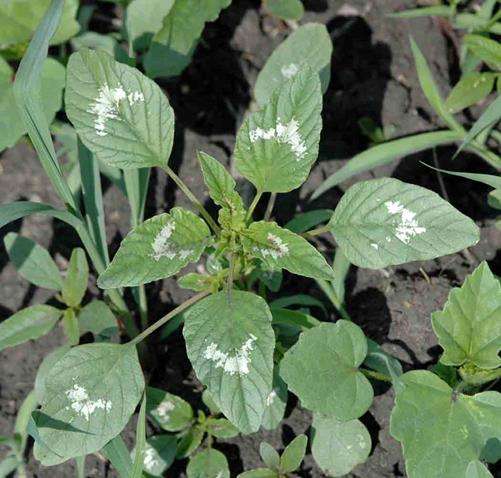Palmer amaranth could affect Illinois soybean yield

Although agricultural weed Palmer amaranth (Amaranthus palmeri) primarily impacts southern U.S. states, new research shows it could soon spread further north and damage soybean yields in Illinois.
"We did a common garden study in southern, central, and northern Illinois to ask if different varieties of Palmer amaranth from the south complete their life cycle in all three locations and cause yield loss in soybean. The short answer is yes: there are no current climate limitations to any of the genotypes that we looked at," said University of Illinois weed ecologist Adam Davis. "This is a serious weed."
Illinois farmers are well acquainted with its aggressive cousin, tall waterhemp (Amaranthus tuberculatus), significant infestations of which can cause soybean yield losses of up to 30 percent. Palmer amaranth is an even bigger threat, causing soybean yield losses up to 80 percent in severe cases.
"It's a real economic game-changer," Davis noted. In the study, Davis and his colleagues only allowed Palmer amaranth to compete with soybean for five weeks to avoid seed dispersal and local infestation after the plants had reached maturity. Still, in that time, soybean yield loss reached 30 percent in some locations.
Unfortunately, Palmer amaranth does not conform to experimental rules in the field.
"It can complete its life cycle in a very short period of time. Even if you killed early season populations, if it comes up again in late summer, it can still produce seed by harvest time."
Palmer amaranth already exists in Illinois, but it hasn't become a major problem. "The short take-home message from this research is that Palmer amaranth is mainly seed limited in Illinois," meaning the reason it's not here in greater numbers is simply that not enough seeds have been introduced yet.
To avoid population explosion in Illinois and elsewhere, farmers should learn to identify and remove Palmer amaranth before it goes to seed. Davis also urges farmers to buy certified seed, including cover crop seed and meals, and to be careful about cleaning equipment, especially if it has been purchased out of state. He also suggests diversifying cropping systems to include winter annuals. Additional guidelines for identification and management of Palmer amaranth have been published by the University of Illinois Weed Science Extension service.
"Palmer amaranth (Amaranthus palmeri) damage niche in Illinois soybean is seed limited," appears in Weed Science. The paper was co-authored by Aaron Hager from the U of I, Brian Schutte from New Mexico State University, and Bryan Young from Purdue University. Funding was provided by the USDA Agricultural Research Service and the Illinois Soybean Association.
More information: Adam S. Davis et al. Palmer Amaranth ( ) Damage Niche in Illinois Soybean Is Seed Limited , Weed Science (2015). DOI: 10.1614/WS-D-14-00177.1
Provided by University of Illinois at Urbana-Champaign















